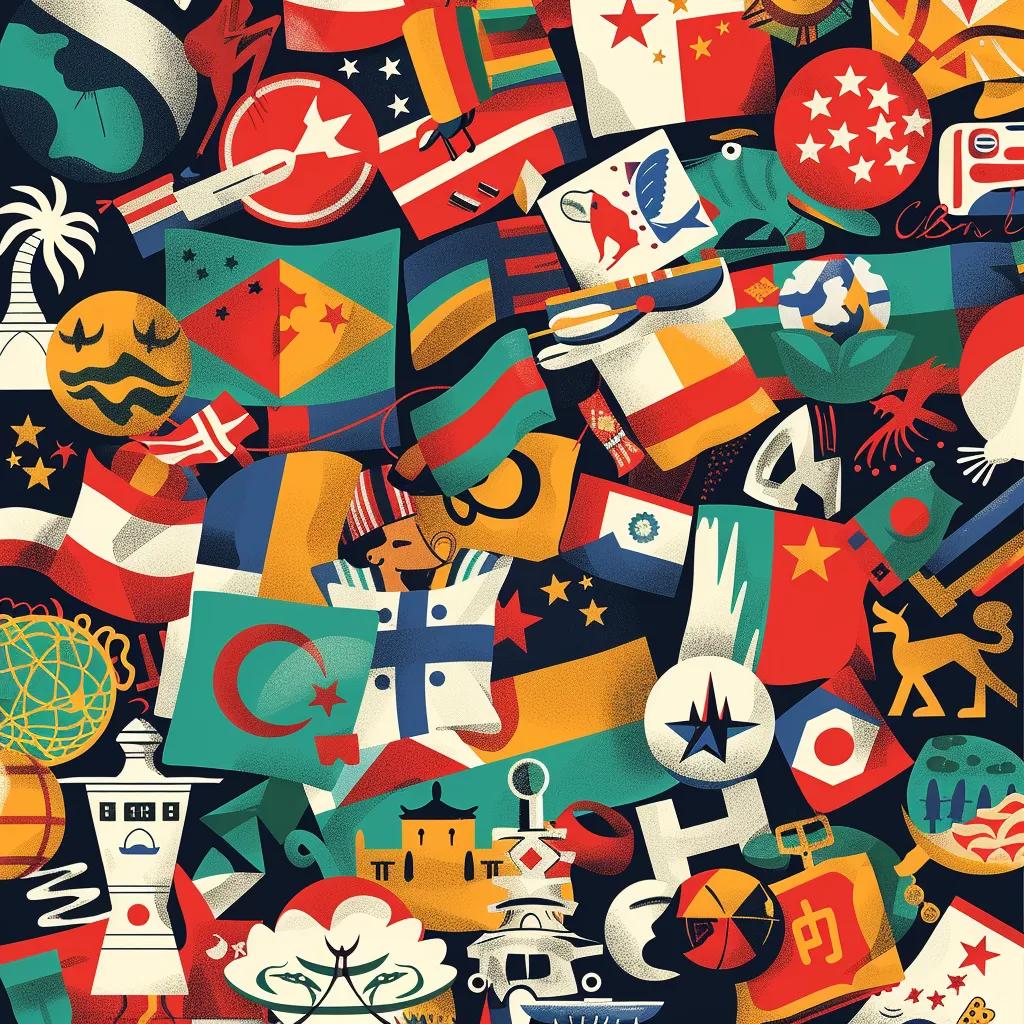What Is International Marketing Translation and Why It Matters for Global Business Success

International marketing translation transforms brand messages into culturally resonant content, enabling companies to connect authentically with diverse audiences and drive measurable growth. By adapting slogans, websites, and campaigns beyond literal conversion, businesses overcome language barriers and unlock new markets. This article explores the core definitions, strategic benefits, essential components, common challenges, and optimization tactics for marketing translation, while weaving in practical insights on choosing services, leveraging technology, and measuring ROI.
Hisparos, Marketing Translation: How to Adapt Your Message to Different Languages (2024)
This source emphasizes the importance of adapting marketing messages to resonate with diverse audiences in different markets, which is a key aspect of international marketing translation.
What Is International Marketing Translation? Definitions and Core Concepts
International marketing translation is the process of converting promotional materials into another language while ensuring cultural relevance, emotional impact, and brand consistency. Effective translation adapts idioms, tone, and imagery so that messages resonate with local audiences without losing the original intent. For example, a global retailer may translate product descriptions and social media ads to reflect regional customs and consumer expectations. You can learn more about
that are essential for global brands.
How Does Marketing Translation Differ from Localization and Transcreation?
Accurate translation ensures clear meaning. Localization adjusts date formats, visuals, and legal references. Transcreation reimagines slogans or taglines to preserve emotional impact, such as transforming “Just Do It” into a culturally compelling equivalent.
The Ultimate Guide - Marketing Translation (2024)
This source provides a clear definition of transcreation, which is a key component of marketing translation.
What Types of Marketing Content Require International Translation?

- Promotional Websites and Landing Pages
- Digital Advertisements and Banner Copy
- Social Media Posts and Campaigns
- Taglines, Slogans, and Brand Names
- Email Newsletters and Automated Drip Sequences
- Video Scripts and Voiceover Text
- Product Descriptions and Catalogs
These content types must align with local preferences, ensuring that imagery, color symbolism, and linguistic nuances reinforce brand credibility in each market.
Tomedes, Marketing Translation: A Guide to Global Audience Engagement (2024)
This source lists various types of marketing content that benefit from international marketing translation.
How Has International Marketing Translation Evolved Over Time?
Early marketing translation relied solely on bilingual copywriters executing word-for-word conversions. As global commerce expanded, companies introduced localization practices in the 1990s to address cultural and technical adaptations. The 2000s ushered in transcreation, where creative teams redefined core messages for emotional resonance. Today, AI-powered translation memory systems, neural machine translation, and integrated multilingual SEO tools streamline workflows, improve consistency, and boost market agility.
The Ultimate Guide - Marketing Translation (2024)
This source provides a historical overview of the evolution of marketing translation.
Why Does International Marketing Translation Matter for Global Market Expansion?
International marketing translation empowers brands to tap into new audiences, foster trust, and accelerate revenue growth by speaking customers’ native language with cultural sensitivity.
How Does Marketing Translation Help Expand Your Global Audience?
Localized marketing translation services enable businesses to:
- Reach non-English-speaking customers by offering native-language campaigns.
- Navigate regional search habits through localized keyword strategies.
- Comply with local regulations and industry standards.
Companies that invest in accurate translation typically see a 47% increase in international web traffic and a 1.5× boost in cross-border conversions.
TranslatePress, Multilingual SEO Guide: Optimize Globally (2025)
This source highlights how marketing translation helps businesses expand their global audience.
How Does Localization Build Brand Trust and Credibility?
Translating content with cultural adaptation demonstrates respect for local norms and consumer expectations. By reflecting local humor, traditions, and values, brands earn credibility and foster loyalty. For instance, customizing customer support scripts to local dialects can increase satisfaction scores by up to 25%.
Tomedes, Marketing Translation: A Guide to Global Audience Engagement (2024)
This source explains how localization builds brand trust and credibility.
How Does International Marketing Translation Enhance Customer Experience and Satisfaction?
Native-language interfaces and marketing messages reduce confusion and friction during decision-making. Clear product descriptions, localized FAQs, and culturally appropriate visuals increase engagement, reduce returns, and improve Net Promoter Scores. This seamless experience often leads to higher lifetime value from international customers.
Transifex, Marketing Translation: Is it Different from Simple Translation? And How to Get it Right (2024)
This source explains how international marketing translation enhances customer experience and satisfaction.
What Is the Impact of Marketing Translation on Revenue and ROI?
Strategic marketing translation drives measurable financial benefits:
- Increased Conversion Rates – Localized campaigns deliver 1.5–2× higher conversions.
- Expanded Market Share – Brands achieve faster entry into new regions.
- Improved Customer Retention – Native-language support boosts loyalty.
- Cost Efficiency – Translation memory and CAT tools lower per-word costs over time.
Brands that localize marketing see an average 25% revenue uplift from international channels, demonstrating clear ROI on translation investments.
Translata.eu, 7 Translation ROI Metrics Global Marketers Can't Ignore in 2024 (2024)
This source discusses the impact of marketing translation on revenue and ROI.
What Are the Key Components of Effective International Marketing Translation?
A robust translation strategy combines cultural insight, brand voice consistency, SEO optimization, technology, and rigorous quality assurance.
Why Is Cultural Adaptation Critical in Marketing Translation?

Cultural adaptation ensures that metaphors, color schemes, and humor align with regional sensibilities. Failing to consider local taboos can damage brand perception. For example, a global food brand adjusted package imagery to respect dietary norms in target markets, preventing costly misinterpretations.
AKOOL, Cultural adaptation in translation: How do you create the same effect in people from different cultures? (2022)
This source emphasizes the importance of cultural adaptation in marketing translation.
How Can Brands Maintain a Consistent Brand Voice Across Languages?
Maintaining tone and personality across translations relies on style guides and transcreation. A brand voice manual outlines key elements—formal vs. conversational tone, humor level, and emotional triggers—and serves as a reference for translators. Transcreation specialists ensure that taglines and campaigns evoke the same brand identity in every language.
The Ultimate Guide - Marketing Translation (2024)
This source explains how brands can maintain a consistent brand voice across languages.
How Does Multilingual SEO Improve Global Visibility?
Multilingual SEO integrates keyword localization, hreflang implementation, and cultural search intent analysis to rank content in target markets. By researching local search volumes, optimizing meta tags, and using geotargeted sitemaps, brands improve search engine visibility and organic traffic.
Strapi, Multilingual SEO: Best Practices for Any Industry (2025)
This source explains how multilingual SEO improves global visibility.
How Is Quality Assurance Ensured in Marketing Translation?
Quality assurance combines:
- Bilingual Editing: Native speakers review translations for accuracy and tone.
- Proofreading: Final checks for grammar, formatting, and consistency.
- Automated QA: Software flags missing tags, numbers, and inconsistencies.
- Pilot Testing: Focus groups validate messaging impact before full rollout.
Attached, Navigating Global Markets: The Crucial Role of Marketing Translations
This source explains how quality assurance is ensured in marketing translation.
What Challenges Are Common in International Marketing Translation and How Can They Be Overcome?
International translation projects often face linguistic pitfalls, workflow inefficiencies, and budget constraints, but strategic planning and expert partnerships mitigate these obstacles.
What Are the Most Frequent Marketing Translation Pitfalls?
- Literal translations that miss cultural context
- Inconsistent terminology across campaigns
- Unintended double meanings from idiomatic expressions
- Mismatched visuals that conflict with local norms
CIM Content hub, International marketing and translation (2023)
This source discusses common challenges in international marketing translation and how to overcome them.
How Can Strategic Planning and Workflow Management Improve Outcomes?
Implementing a clear process—content inventory, glossary creation, translation memory setup, and defined review cycles—ensures transparency and on-time delivery. Integrating translation tasks early in the campaign timeline prevents last-minute bottlenecks and allows ample time for testing localized assets.
How Do You Choose the Right Marketing Translation Service Provider?
Select a provider based on:
- Industry Expertise – Experience in your sector
- Cultural Fluency – Access to native-speaking linguists
- Technology Stack – Support for CAT tools and APIs
- Quality Standards – ISO certification, established QA processes
- Scalability – Ability to handle multiple languages and high volumes
Hisparos, Marketing Translation: How to Adapt Your Message to Different Languages (2024)
This source provides guidance on choosing the right marketing translation service provider.
How Should Budgeting and Resource Allocation Be Managed?
Allocate budgets at project initiation by estimating word counts, languages, and complexity level. Include contingency for reviews, transcreation, and design adaptation. Centralizing translation memory and style guides maximizes reuse and lowers per-word rates over time.
How Can You Measure and Optimize the Success of International Marketing Translation?
Tracking performance and continuously refining content ensures sustained impact and higher ROI.
What Key Performance Indicators (KPIs) Track Marketing Translation ROI?
- Organic Search Traffic (localized landing pages)
- Conversion Rates (region-specific CTA performance)
- Engagement Rates (time on page, bounce rate)
- Lead Generation (form submissions by locale)
- Customer Satisfaction Scores (post-purchase surveys)
These KPIs reveal content effectiveness and guide optimization.
How Do Case Studies Demonstrate the Value of Marketing Translation?
- A SaaS company saw a 60% increase in trial sign-ups after localizing onboarding emails.
- An e-commerce brand achieved a 30% higher average order value with regionally adapted promotions.
These case studies illustrate tangible results and best practices for replication.
What Are Best Practices for Continuous Optimization and Monitoring?
- Conduct quarterly content audits for accuracy and relevancy.
- Update SEO keyword lists based on evolving search trends.
- Leverage semantic entity tracking to refine topic coverage.
- Iterate on messaging using A/B testing and user feedback.
Linguise, How to measure the translation ROI (2023)
This source explains how to measure and optimize the success of international marketing translation.
What Role Does Transcreation Play in International Marketing Translation?
Transcreation bridges translation and creative adaptation, preserving brand voice and emotional impact across cultures.
Smartcat, Marketing transcreation: Your guide and best practices (2024)
This source explains the role of transcreation in international marketing translation.
How Does Transcreation Preserve Brand Voice and Emotional Impact?
Transcreation specialists reimagine slogans and narratives to capture the original campaign’s spirit. By rewriting content rather than translating literally, they ensure that humor, puns, and emotional triggers align with cultural preferences, safeguarding brand personality.
Traduality, What are Some Examples of Transcreation?
This source explains how transcreation preserves brand voice and emotional impact.
When Should Transcreation Be Preferred Over Direct Translation?
Transcreation is essential when:
- Launching global advertising campaigns
- Adapting creative slogans or taglines
- Communicating nuanced emotional appeals
- Entering markets with significant cultural differences
Choosing transcreation early prevents misinterpretations and maximizes emotional resonance.
Smartcat, Marketing transcreation: Your guide and best practices (2024)
This source explains when transcreation should be preferred over direct translation.
How Does Multilingual SEO Integrate with International Marketing Translation?
Integrating SEO ensures that localized content ranks effectively in target markets, amplifying organic reach.
Strapi, Multilingual SEO: Best Practices for Any Industry (2025)
This source explains how multilingual SEO integrates with international marketing translation.
What Are Best Practices for Keyword Localization and Hreflang Implementation?
- Perform native-language keyword research for local search intent.
- Optimize page titles, headings, and meta descriptions with localized terms.
- Implement hreflang tags to signal language-country variants to search engines.
- Maintain a language-specific URL structure (e.g., /en/, /fr/).
Strapi, Multilingual SEO: Best Practices for Any Industry (2025)
This source lists best practices for keyword localization and hreflang implementation.
How Does Multilingual SEO Boost Organic Traffic and Market Reach?
Localized SEO increases impressions in regional search results, driving qualified traffic. Brands that implement hreflang and localized keywords typically see 20–30% higher click-through rates on search engine results pages.
Contentful, Multilingual SEO best practices (2024)
This source explains how multilingual SEO boosts organic traffic and market reach.
Global brands that invest in strategic marketing translation, cultural adaptation, and multilingual SEO position themselves for sustainable international growth. Explore our marketing translation services to connect authentically with each market, maintain a unified brand voice, and measure success through clear performance metrics. Whether your goal is to expand into new regions or deepen engagement with existing audiences, a comprehensive translation strategy is essential for competitive advantage and long-term profitability.








